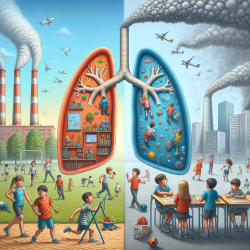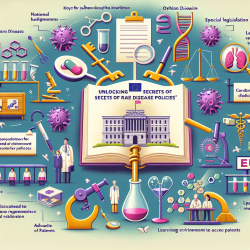Introduction
As practitioners dedicated to improving child development outcomes, understanding environmental factors that impact cognitive and behavioral health is crucial. A recent study, "Associations of Pre- and Postnatal Air Pollution Exposures with Child Behavioral Problems and Cognitive Performance: A U.S. Multi-Cohort Study," sheds light on how air pollution affects children. This blog explores the study's findings and offers insights on how practitioners can use this information to enhance their practice.
The Study at a Glance
The study examined 1,967 mother-child pairs from three U.S. pregnancy cohorts, focusing on the effects of nitrogen dioxide (NO2) and particulate matter (PM2.5) on children aged 4-6 years. Using advanced spatiotemporal models, the researchers assessed air pollution exposure during critical pre- and postnatal periods. They found that higher prenatal NO2 exposure, particularly in the first and second trimesters, was associated with increased behavioral problems. Additionally, postnatal PM2.5 exposure at ages 2-4 was linked to both higher behavioral problem scores and lower IQ.
Key Findings and Implications
- Behavioral Problems: Children exposed to higher levels of NO2 during early pregnancy showed more behavioral issues. This highlights the importance of monitoring air quality during pregnancy.
- Cognitive Performance: Postnatal exposure to PM2.5 was associated with lower IQ scores, suggesting that early childhood is a sensitive period for cognitive development.
- Sex Differences: The study noted stronger associations between PM2.5 exposure and behavioral problems in girls, while boys showed more cognitive impacts. This indicates the need for sex-specific interventions.
Practical Applications for Practitioners
Practitioners can use these findings to inform their approach to child development. Here are some actionable steps:
- Environmental Assessments: Incorporate environmental factors into assessments. Understanding a child's exposure to pollutants can guide intervention strategies.
- Parental Guidance: Educate parents on minimizing pollution exposure during pregnancy and early childhood. Simple measures like using air purifiers and avoiding outdoor activities during high pollution days can be effective.
- Advocacy: Advocate for policies that reduce air pollution, particularly in areas with vulnerable populations. Collaborate with local health departments to raise awareness and promote clean air initiatives.
Encouraging Further Research
While this study provides valuable insights, it also highlights the need for further research. Practitioners are encouraged to explore the following areas:
- Longitudinal Studies: Conduct long-term studies to understand the lasting effects of air pollution on cognitive and behavioral development.
- Intervention Effectiveness: Evaluate the effectiveness of interventions designed to mitigate the impact of air pollution on child development.
- Broader Environmental Factors: Investigate other environmental factors, such as noise pollution and socioeconomic status, that may interact with air pollution to affect child development.
Conclusion
Understanding the impact of air pollution on child development is critical for practitioners focused on creating positive outcomes. By integrating these findings into practice and advocating for cleaner environments, we can help ensure healthier futures for children. For more detailed insights, practitioners can access the full research paper by following this Associations of Pre- and Postnatal Air Pollution Exposures with Child Behavioral Problems and Cognitive Performance: A U.S. Multi-Cohort Study.










